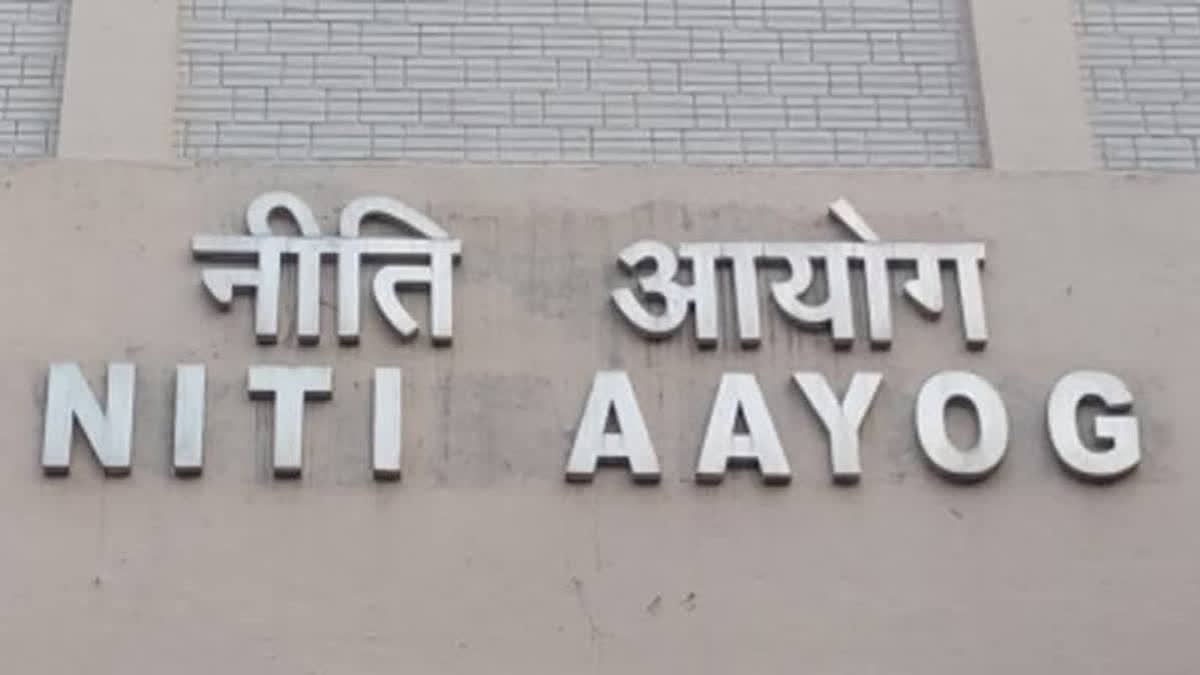New Delhi: India’s trade aspirations took centre stage with the release of the NITI Aayog’s Trade Watch Quarterly report for Q1 FY25, a comprehensive overview of the country’s trade dynamics during April–June 2024. The report not only provides a detailed snapshot of India’s current trade environment but also underscores strategic pathways to achieve its ambitious $2 trillion export target by 2030.
Vice Chairman of NITI Aayog, Suman Berry, highlighted the pivotal role of trade in shaping India’s economic trajectory. “Trade plays a pivotal role in India’s economic growth and its vision of a Viksit Bharat (Developed India). Over the decades, trade’s contribution to India’s GDP has grown significantly, from just 15% in 1980 to 48% in 2023,” Berry remarked. He emphasised that navigating global uncertainties such as geopolitical tensions and climate-driven regulatory changes is essential for India to maintain resilience and sustain its growth trajectory.
Key Trends and Insights from the Report
The Trade Watch Quarterly (TWQ) report outlines India’s total trade performance for the first half of 2024, which reached $576 billion—a year-on-year (YoY) growth of 5.45%. While exports stood at $231 billion, reflecting a modest increase of 5.41%, imports surged to $345 billion, resulting in a widened current account deficit of $9.7 billion.
It also highlights India’s growing strengths in services exports, which rose by 10.09% YoY to reach $89 billion. IT services and other business solutions were the frontrunners, with global market shares of 10.2% and 7.16%, respectively. However, labour-intensive sectors like textiles and leather have struggled, underscoring the need for targeted policy interventions.
Strategic Policy Interventions and Structural Reforms
B.V.R. Subrahmanyam, CEO of NITI Aayog, underscored the government’s focus on infrastructure and policy reforms as transformative forces. "India’s trade has witnessed remarkable transformation in recent years, fueled by strategic interventions such as the National Logistics Policy, production-linked incentive (PLI) schemes, and digital infrastructure development,” he said. These measures, he noted, have significantly improved the ease of doing business, particularly for MSMEs, ensuring India’s deeper integration into global value chains (GVCs).
The report also identifies structural challenges within India’s manufacturing sector, such as high input costs and fragmented production systems. Arvind Virmani, a member of NITI Aayog, suggested that addressing these issues is critical.
"India’s trade landscape is at a transformative stage. By leveraging its demographic dividend, diversifying exports, and reducing trade barriers, India can significantly enhance export competitiveness and foster inclusive growth," Virmani observed.
Geopolitical Challenges and Emerging Risks
Geopolitical shifts, including the ongoing U.S.-China trade tensions, present a dual-edged sword for India. While the diversification of supply chains offers opportunities, challenges such as the European Union’s Carbon Border Adjustment Mechanism (CBAM) loom large. Starting in 2026, CBAM will impose tariffs on carbon-intensive goods like steel and aluminium, posing significant risks to Indian exporters.
Dr. Pravakar Sahoo, Senior Lead at NITI Aayog, noted, “Understanding the evolving dynamics of international trade is crucial for sustainable economic growth. The TWQ will provide essential insights for policymakers to address challenges such as CBAM while identifying emerging opportunities in global markets.”
Regional and Sectoral Insights
The Trade Watch Quarterly emphasises the importance of regional trade partnerships and diversification. North America and the European Union continue to be pivotal markets, accounting for 21% and 18.6% of India’s exports, respectively. India’s trade with Free Trade Agreement (FTA) partners also showed robust growth, with exports rising by 12% and imports increasing by 10.3%, primarily driven by energy and industrial goods.
However, the report highlights vulnerabilities in labour-intensive sectors like pearls, textiles, and leather, which have experienced declining global market shares. In contrast, mineral fuels, electrical machinery, and pharmaceuticals emerged as strong contributors to India’s export portfolio.
A Roadmap for Inclusive Growth and Resilience
To capitalize on these strengths and mitigate challenges, the Trade Watch Quarterly outlines several strategic recommendations:
- Infrastructure Modernization: Enhanced trade facilitation measures and investments in digital platforms, such as the Trade Connect e-Platform, aim to support exporters and streamline regulatory processes
- Export Incentives: Extension of schemes like RoDTEP (Remission of Duties and Taxes on Exported Products) is crucial for maintaining export competitiveness
- Technological Integration: Leveraging digital trade opportunities and innovation can help India tap into high-growth sectors
- Strengthening FTAs: Negotiating strategic trade agreements with partners like the UK and the EU will help reduce trade barriers and foster lasting economic ties
Vision 2047: Toward a Developed Nation
The report aligns with India’s broader vision of becoming a developed nation by 2047. By addressing structural inefficiencies, promoting entrepreneurship, and enhancing value addition, India aims to emerge as a resilient and competitive player in global trade.
Berry concluded with a call to action: “Let this report inspire collective action between the government and industry to capitalise on India’s trade potential for Viksit Bharat."



